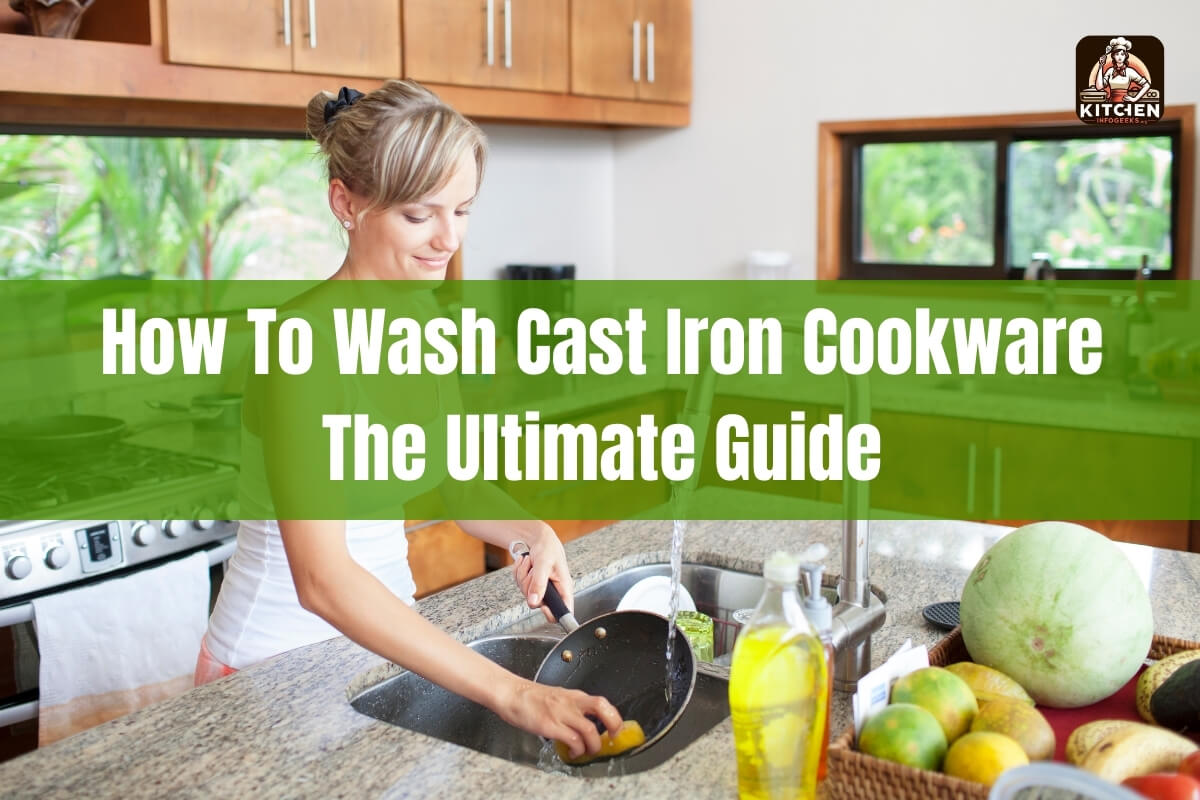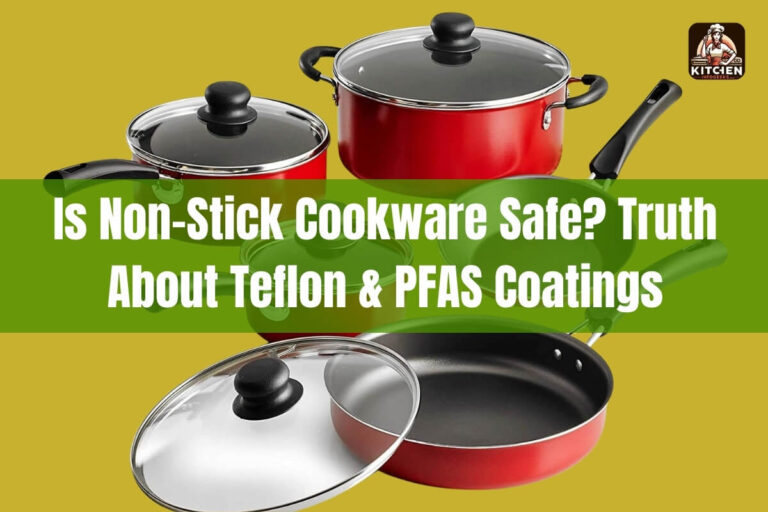
Are you wondering how to wash cast iron cookware properly? Cast iron pans are beloved kitchen tools for their durability, heat retention, and ability to develop a natural non-stick surface over time. However, caring for cast iron requires a bit of know-how to maintain its seasoning and prevent rust. In this comprehensive guide, we’ll cover everything you need to know about cleaning and maintaining your cast iron cookware.
Understanding Cast Iron Cookware
Before we dive into the cleaning process, let’s first understand what makes cast iron cookware unique. Cast iron is a type of cookware made from molten iron that is poured into a mold and allowed to cool. The resulting pans are incredibly durable and can withstand high temperatures, making them ideal for various cooking methods like searing, frying, baking, and more.
One of the key features of cast iron is its ability to develop a protective layer called “seasoning.” This natural non-stick surface is created when oils and fats polymerize and bond to the pan’s surface through repeated use and proper maintenance. A well-seasoned cast iron pan not only prevents food from sticking but also adds a subtle, delicious flavor to your dishes.
Unseasoned cast iron pans, on the other hand, may appear dull or rusty. These pans need to be seasoned before use to create that coveted non-stick surface.
When to Clean Cast Iron Pans
It’s a common misconception that cast iron pans need to be cleaned after every use. In fact, many cast iron enthusiasts recommend cleaning their pans only occasionally, as the leftover bits of cooked-on food can actually contribute to the seasoning and flavor of future meals.
However, there are certain signs that indicate it’s time for a thorough cleaning:
- Excessive buildup of stuck-on food or grease
- A rancid or off smell
- Rust spots or discoloration
- Difficulty in maintaining the seasoning
As a general rule, if your cast iron pan is starting to look or smell funky, it’s probably time for a deep clean.
Cleaning Cast Iron Cookware: Step-by-Step Guide
Now, let’s get to the heart of the matter: how to wash cast iron cookware properly. Here’s a step-by-step guide to follow:
Materials Needed:
- Scrub brush or scouring pad
- Kosher salt (optional)
- Cooking oil (vegetable, canola, or flaxseed oil)
- Paper towels or lint-free cloth
Step 1: Clean While the Pan is Still Warm
As tempting as it might be to let the pan sit while you enjoy your freshly prepared feast, taking a few minutes to clean your cast iron immediately after use will save you a lot of time and effort later. That’s because stuck-on food hardens as it cools, making it more difficult to remove.
Step 2: Use Soap or No Soap?
This is a topic of ongoing debate among cast iron enthusiasts. Some swear by using a small amount of mild dish soap, while others strictly avoid soap, claiming it can strip the seasoning.
The truth lies somewhere in the middle. A little soap can be used occasionally, but it’s essential to be cautious and re-season the pan afterward. If you prefer to avoid soap altogether, you can use a combination of hot water and elbow grease to remove any stuck-on bits.
Step 3: Scrub with a Scouring Pad or Brush
Whether you use soap or not, a good scrubbing is necessary to remove any stubborn food residue. A stiff-bristled brush or scouring pad (not steel wool, as it can be too abrasive) works well for this task.
If you’re dealing with particularly stubborn stuck-on food, you can sprinkle some coarse kosher salt onto the pan and use it as an abrasive to scrub away the grime.
Step 4: Rinse and Dry Thoroughly
Once you’ve scrubbed the pan clean, rinse it thoroughly with hot water to remove any soap residue or loosened food particles. Then, dry the pan completely with paper towels or a lint-free cloth.
It’s crucial to ensure the pan is completely dry, as any remaining moisture can lead to rust. To guarantee your cast iron is truly dry, you can place it on the stove over low heat for a few minutes, allowing any remaining water to evaporate.
Step 5: Oil the Surface
After your cast iron pan is clean and dry, it’s time to re-season it. This step is essential to maintain the pan’s non-stick surface and prevent rust.
Using a paper towel or lint-free cloth, rub a thin layer of cooking oil (vegetable, canola, or flaxseed oil work well) over the entire surface of the pan, including the exterior and handle. Wipe away any excess oil, leaving just a thin, even coating.
Dealing with Stubborn Stuck-on Food
Sometimes, even the most diligent cleaning routine may not be enough to tackle those stubborn, baked-on messes. In such cases, you can try the following techniques:
Using a Pan Scraper
A pan scraper, also known as a cast iron cleaner or chainmail scrubber, can be an excellent tool for removing stuck-on food without damaging the seasoning. These scrubbers are made of small metal rings that gently scrape away stubborn residue while preserving the pan’s surface.
Boiling Water Technique
For those really tough, baked-on messes, try the boiling water technique. Simply pour some water into the pan and let it come to a boil on the stovetop. The heat and steam will help loosen the stuck-on food, making it easier to scrape away with a spatula or scrub brush.
Salt and Water Paste
If you’re looking for a more abrasive yet gentle solution, try making a paste with coarse kosher salt and water. Sprinkle a generous amount of salt onto the pan, add a little water, and use the mixture to scrub away any stubborn grime.
Cast Iron Cleaning Tips and Tricks
Here are a few additional tips and tricks to help you keep your cast iron cookware in top condition:
- Avoid the dishwasher: The harsh detergents and high temperatures of a dishwasher can strip the seasoning from your cast iron pans. Always wash them by hand.
- Prevent rust: After cleaning and drying your pan, it’s essential to oil it to prevent rust from forming. Even a tiny bit of moisture left on the surface can lead to rust.
- Use a lint-free cloth or paper towel: When drying and oiling your cast iron, use a lint-free cloth or paper towel to avoid leaving behind any lint or fibers.
- Don’t worry about black residue: If you notice a little black residue on your towel after wiping down the pan, don’t be alarmed. This is just a bit of seasoning, and it’s perfectly normal.
- Wipe away excess oil: After oiling your pan, be sure to wipe away any excess oil with a clean paper towel or cloth. You want a thin, even coating, not a pool of oil.
- Store properly: When not in use, store your cast iron cookware in a dry place. You can stack them with paper towels in between to prevent scratching, or hang them on a sturdy rack.
Frequently Asked Questions
Can I soak my cast iron pan in water?
It’s generally not recommended to soak your cast iron pan in water for extended periods. Prolonged soaking can lead to rust and potentially damage the seasoning. If you need to soften stuck-on food, try the boiling water technique instead.
Can I use steel wool or a metal scrubber?
While steel wool and metal scrubbers are effective at removing stubborn grime, they can also be too abrasive and potentially scratch or damage the seasoning on your cast iron pan. It’s better to use a softer scouring pad or brush.
How do I clean and restore a rusty cast iron pan?
If your cast iron pan has developed rust, don’t worry – it’s not ruined! Start by scrubbing away the rust with steel wool or a stiff brush. Then, rinse and dry the pan thoroughly. Once it’s dry, re-season the pan by rubbing it with a thin layer of oil and baking it in the oven at a high temperature (around 450°F) for about an hour. Repeat this process until the pan regains its smooth, black patina.
Can I put my cast iron pan in the dishwasher?
No, it’s not recommended to put your cast iron pan in the dishwasher. The harsh detergents and high temperatures can strip away the seasoning and potentially cause rusting or warping. Always wash your cast iron cookware by hand.
How to Season a New or Unseasoned Cast Iron Pan
If you’ve recently acquired a new cast iron pan or notice that your seasoning has worn off, it’s time to re-season it. Here’s how:
- Prepare the pan: Thoroughly clean the pan with hot water and a stiff brush to remove any rust, residue, or existing seasoning.
- Dry completely: Ensure the pan is completely dry, as any moisture can lead to rust. You can place it in a warm oven for a few minutes to help evaporate any remaining water.
- Apply oil: Using a paper towel or lint-free cloth, apply a thin, even layer of a high smoke point oil (such as vegetable, canola, or flaxseed oil) to the entire pan, including the exterior and handle.
- Bake the pan: Place the oiled pan upside down on the middle rack of your oven and place a large baking sheet or aluminum foil on the bottom rack to catch any drips. Bake at 450°F (230°C) for one hour.
- Cool and repeat: Turn off the oven and allow the pan to cool completely inside the oven. Repeat the oiling and baking process 2-3 times for a new pan to build up a solid seasoning base.
Remember, seasoning is a continuous process, and your pan’s non-stick properties will improve with regular use and proper maintenance.
Recipes and Cooking Methods that Help Maintain Seasoning
Certain cooking methods and recipes can actually help enhance and maintain the seasoning on your cast iron cookware:
- Frying or sautéing: Cooking with oils or fats, such as frying chicken or sautéing vegetables, can help build up and reinforce the seasoning.
- Baking cornbread or other baked goods: The oils and fats in recipes like cornbread can contribute to seasoning the pan.
- Cooking bacon or sausage: The rendered fat from these types of meats can help season the pan as you cook.
- Roasting or baking at high temperatures: The high heat can help polymerize any oils or fats left in the pan, enhancing the seasoning.
By incorporating these cooking methods and recipes into your routine, you can not only enjoy delicious meals but also maintain and improve the seasoning on your cast iron cookware.
Conclusion
Proper cleaning and maintenance are essential for preserving the longevity and performance of your cast iron cookware. By following the step-by-step guide outlined in this article, you can ensure your cast iron pans remain in top condition for years to come.
Remember, a well-seasoned cast iron pan is not only a versatile and durable cooking tool but also a culinary treasure that can be passed down through generations. With a little care and attention, your cast iron cookware will become a cherished kitchen companion, delivering delicious meals and creating lasting memories.
So, embrace the joy of cooking with cast iron, and don’t be afraid to get a little hands-on with the cleaning process. Your efforts will be rewarded with a trusty pan that only gets better with age and use.






